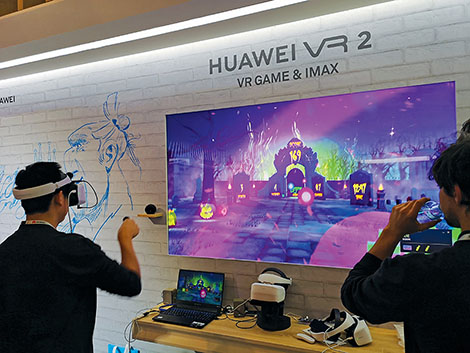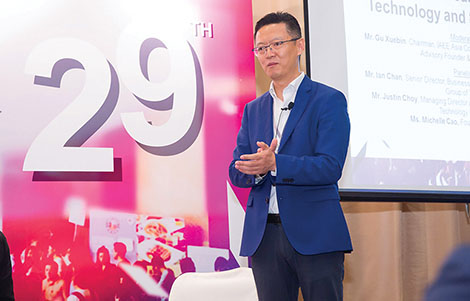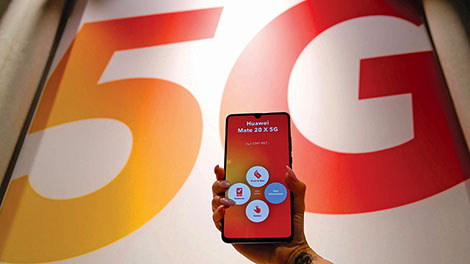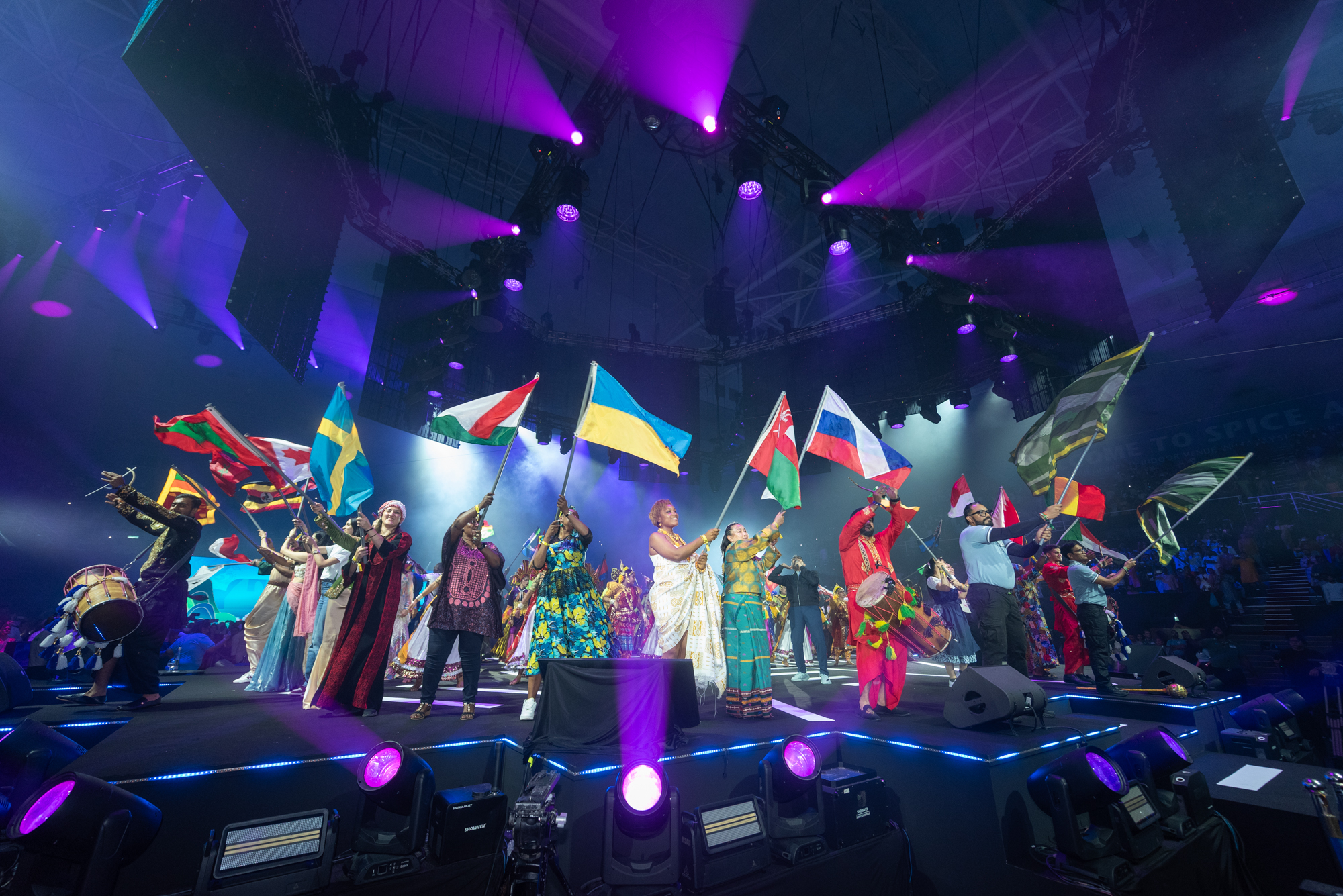IT’S A TURNING point in the history of communications, the future of connectivity, and a game changer for the meetings and events industry … we are talking about the fifth generation cellular network technology that provides broadband access, more commonly known as 5G.
It is also a security threat and a health hazard, depending upon who you speak to, and even a possible disruptor of vital satellite signals, according to US meteorologists.
There is no doubt that 5G is as controversial as it is highly anticipated, but there is equally no doubt that it will deliver super high-speed connectivity and downloads, with some suggesting speeds up to 1,000 times faster than 4G LTE.
The economic rewards of implementing the new networks are predicted to be huge, with analysts predicting that 5G will be widely in place by next year and set to connect over one billion users by 2025. Perhaps as a result, there is already world politics involved, with the USA accusing China’s Huawei technology giant’s early mastery of 5G technology and supply of hardware and infrastructure as being a potential security threat to the West.

There is local politics involved too, with people in the vicinity of the new cell towers in a number of countries already launching protests over health concerns.
More than 3,000 people in Bristol in the UK are calling for work on the 5G mobile network to be halted over radiation risks, and the cities of Geneva and Florence both stopped their 5G rollout in April over fears it could lead to people getting cancer. One doctor at Washington State University describes its introduction as “the stupidest idea anyone has had in the history of the world”.
Whether or not 5G radio waves are hazardous, and despite the political issues and potential economic rivalries, one thing is for sure: the technology will facilitate the interconnected Internet of Things or, as IIshana Artra puts it on the CounterPunch website, “A world in which our refrigerators alert us when we’re low on milk, our baby’s diapers tell us when they need to be changed, and Netflix is available everywhere, all the time.”
The potential gains for the business meetings and events industry are huge. “Imagine supporting your attendees through a wide range of premium event opportunities, such as pre-ordering refreshments or instantly sharing their experiences on social media,” mobile event technology specialist Eventbase says on its website. “Expect your event app to get smarter at recognising attendee locations, making proactive customised attendee experiences via highly personal recommendations a reality.”

Gu Xuebin (above), chairman of the IAEE Asia Council, managing partner of SinoPlus Advisory, and founder and CEO of WeMeet, is certain of two things. First, that 5G is a “game changer” for the industry, and second, that China is at the forefront of its implementation.
“This technology might have the chance not only to make changes at a user level, but to change how communication within our industry, between different destinations, venues, and organisers, takes place.
It can change the landscape as to how cities or venues can speak to each other,” Gu says.
“You look at what 4G has done at a user and consumer level. It enabled mobile social media, and that changed how marketing and services were delivered. If 4G enhanced our industry, 5G has the chance to completely change the landscape.”
He says China is leading the way, with Shanghai Hongqiao Railway Station due to have total 5G coverage by September this year, and Shanghai’s National Exhibition and Convention Centre in the Shanghai Hongqiao Central Business District also now well on the way to having a 5G network.
My suggestion to venues and organisers is to jump on this right now. It will be a game changer . . . the first movers on this will come out of it in a big way – Gu Xuebin, WeMeet CEO
Earlier this year the Intercontinental Shenzhen, along with China Telecom’s Shenzhen branch and Huawei, showed off what a 5G smart hotel of the future might look like: there were robots guiding guests to their rooms while chatting with them in the elevator, with everything from check-in to virtual reality gaming connected to the cloud.
Gu says the mainland examples demonstrate the connectivity, speed and bandwith that will revolutionise the services that event organisers will be able to offer.
“At infrastructure, venue and organiser level, and from a return on investment and marketing perspective, 5G will make major changes. My suggestion to venues and organisers is to jump on this right now. It will be a game changer. The early adoption will trigger enormous interest and the first movers on this will come out of it in a big way.
“I was at the Mobile World Congress and saw at the show how much of an impact 5G is making, and this is just the first raindrop. I think it will only take 18 to 24 months at the most for many venues to implement it.”

Justin Choy (above), managing director and lead design engineer for Creative Technology, speaking at the Hong Kong Exhibition and Convention Industry Association conference in June, said events were “getting boring because people were getting used to them”. They wanted something better and 5G was the answer.
Speaking to MIX later, Choy balanced his HKECIA enthusiasm for the new medium by stressing it is in its technical infancy, and says there is still a long way to go before organisers and venues can benefit from the changes.
“There really is nothing to plan for yet. The use of 5G in the meeting and events industry still hasn’t really been thought out yet,” he says.
“In a nutshell, 5G essentially provides a new avenue for an internet connection for any device.
“In this industry, most events are already covered by wifi as it stands. With 802.11ac, you are looking at theoretical speeds of about 1.3Gbs. 802.11ax theoretical max is 14Gbps. 5G currently supports about 3Gbs and has a theoretical max of 10Gbps. So wifi is still the predominantly faster technology going forward.”
There really is nothing to plan for yet. The use of 5G in the meeting and events industry still hasn’t really been thought out yet – Justin Choy, Creative Technology
Choy stresses that, while 5G will be a winner for video streaming, and that most of the benefits are seen in terms of the consumer market, organisers will be looking to use the increased bandwith and speed to upload event data, a more specialised application.
“It would be uploading video from devices such as phones and IoT devices through 5G to a central data processing server. This could be used to live stream on Instagram, Facebook, etc,” he says. “It can also be used for extended reality use cases, for facial recognition, or essentially any Artificial Intelligence scenario that requires a super computer to real-time process video streams.”
More… 5G Raises Events to New Levels

Keiran Lovett, product manager with Shadow Factory, a Hong Kong-based production company specialising in content development, post- production, immersive media, technology and app development, says one of the main benefits of 5G will be to facilitate “heavier content” streaming at higher speeds, especially high-definition 4K 360 videos.
“We’ve seen lots of use cases for streaming 360 video content, but these have traditionally been locked to purely wifi networks due to the Increased bandwidth and speed will allow better streaming of content to VR headsets, allowing the size and weight of devices to be reduced significantly mass of content that needs to be loaded,” he says.
“The increased bandwidth and speed will also allow better streaming of content to VR headsets, allowing the size and weight of head-mounted devices to be reduced significantly. Users won’t need massive storage or processing power when streaming that content in.”
Increased bandwidth and speed will allow better streaming of content to VR headsets, allowing the size and weight of devices to be reduced significantly – Keiran Lovett, Shadow Factory
Lovett says the network will eventually allow for better connection in denser areas, such as stadiums and arenas.
“We’ve been looking into Augmented Reality experiences to enhance the audience experience in sports and performances, so the promise of streaming real-time content to thousands of people has moved from an idea to concepts we can start putting on paper.”
ENHANCING EMERGENCY RESPONSES
 DOWNLOAD speeds, video streaming, and Augmented and Virtual Reality are the benefits most associated with 5G, but there is another area where it can be crucial to the meetings and events industry… safety and security.
DOWNLOAD speeds, video streaming, and Augmented and Virtual Reality are the benefits most associated with 5G, but there is another area where it can be crucial to the meetings and events industry… safety and security.
“As 5G improves connectivity between event management and emergency personnel, reaction times to emergency situations will become almost instant,” Eventbase says on its website. “Planners will know the location, hazards and number of people affected in an incident, giving increased security and control. Communication possibilities with attendees will mean visitors can be instantly updated with security notifications.”
And Lindsay Notwell of Cradlepoint (right), specialists in cloud-delivered network solutions for business, service providers, and government organisations, says emergency services are already experimenting with drones and robots to gain visibility over situations and maximise the safe deployment of resources.
“In the future, 5G will enable the real-time feedback loops required to remotely operate drones to deliver equipment, medicine, food and water to disaster locations, regardless of geographical location.
“Similarly, emergency communication will support fail-safe ‘total conversation’ services featuring voice and video status updates, alongside live telematic feeds on the location of other emergency responders, real-time updates on public transport movements and even social media activities,” Notwell says.



